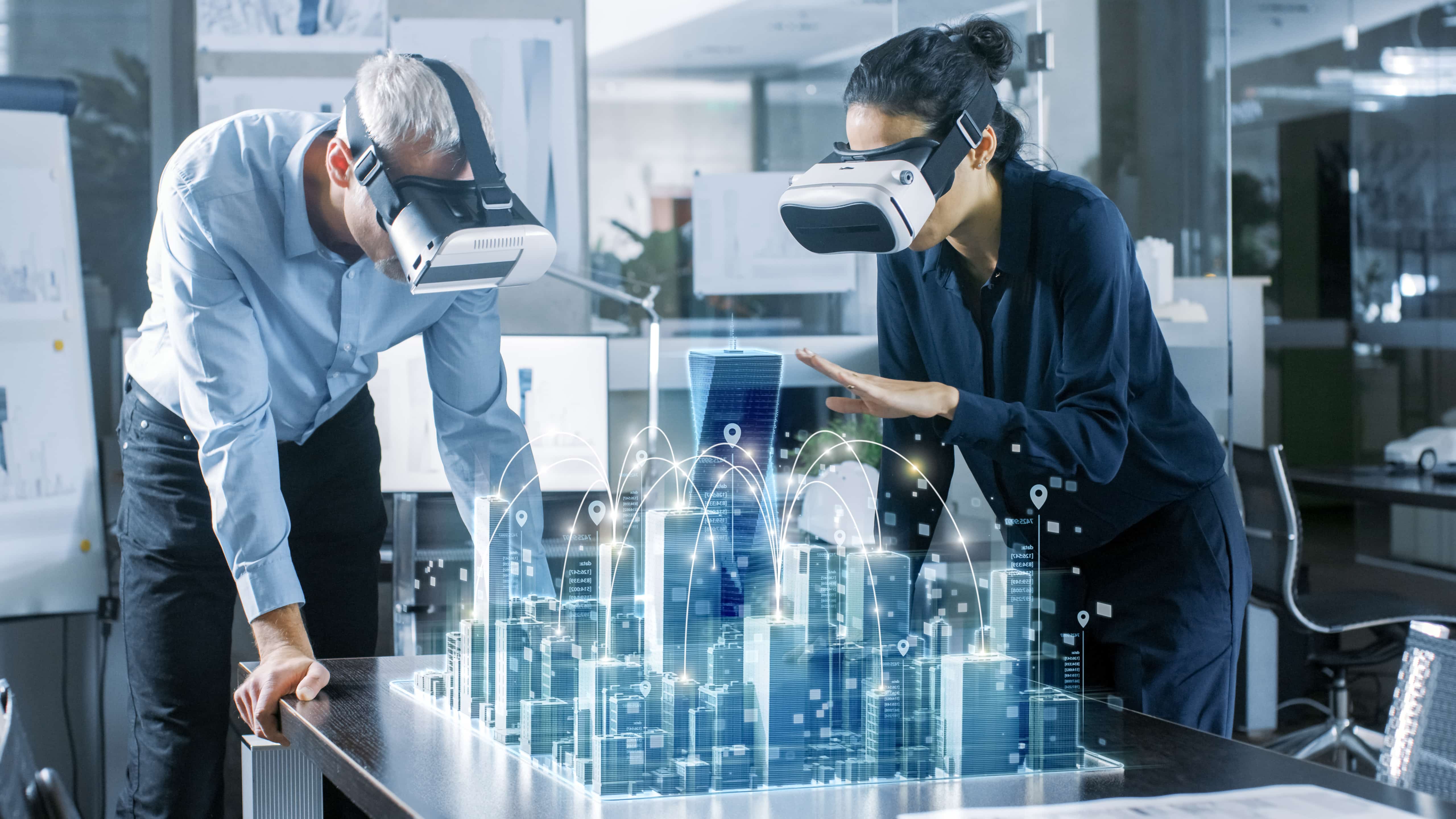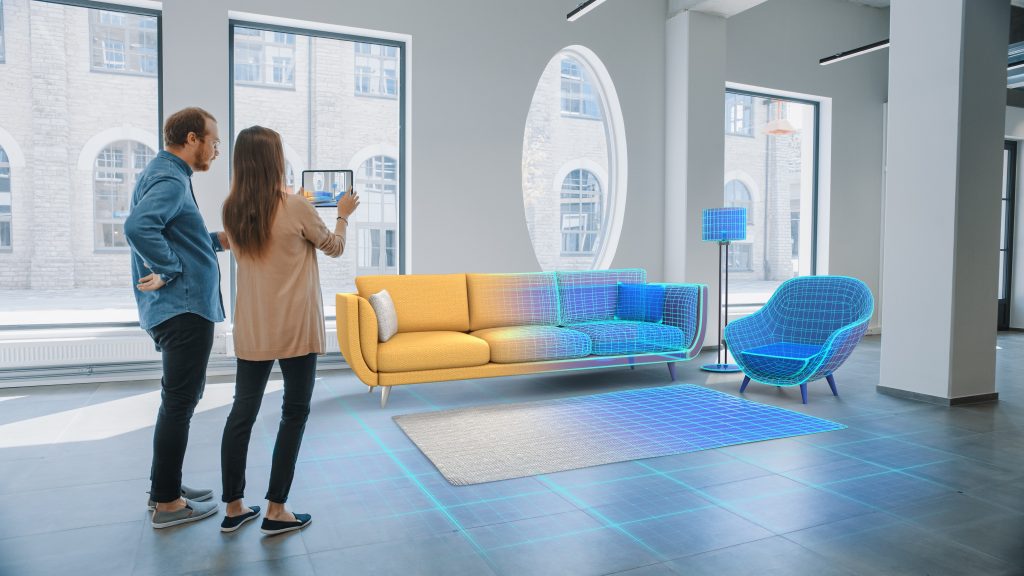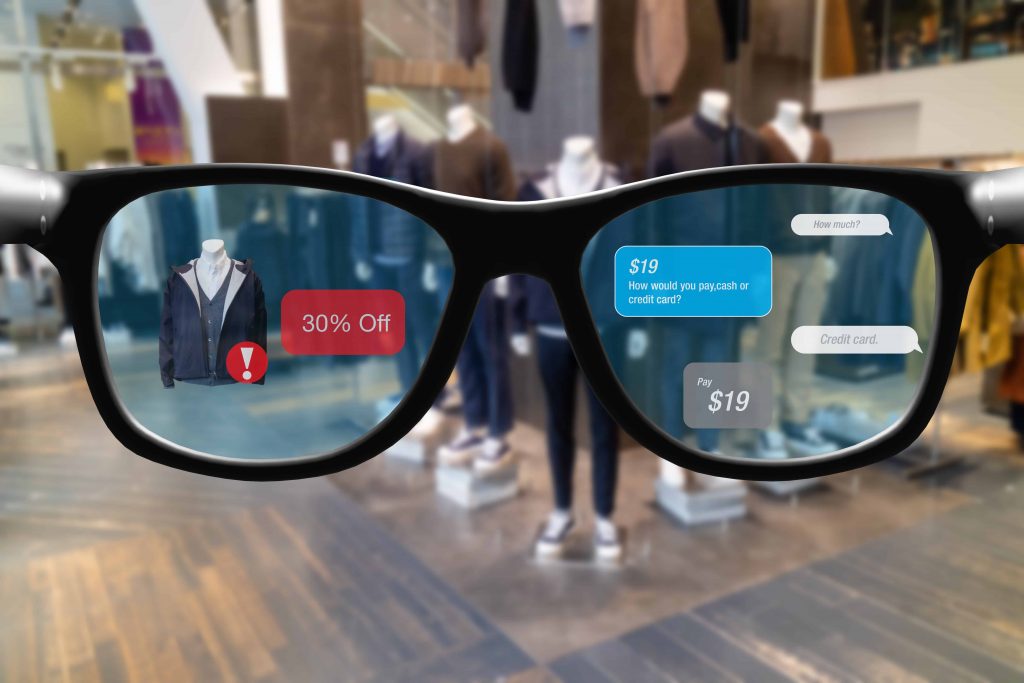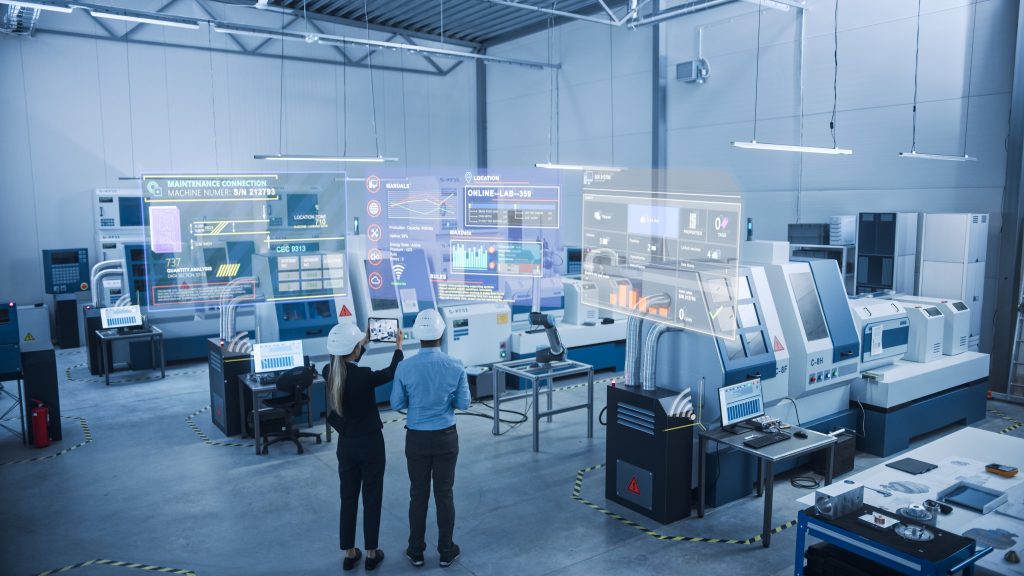Whether you know it or not, Augmented Reality (AR) has probably become a part of your life. Even if you don’t take selfies with a dog ear filter or play games like Pokémon Go, you’ve probably experienced AR. NFL Football was one of the first to use AR commercially when they put the colored first down lines on the field that we could only see with our TVs. Recently, AR has been showing up as backgrounds of the beach or an office space during our never-ending online video calls.
But aside from games, fun filters, and backgrounds, many wonder if AR is anything more than a novelty or promotional tool. I often get the question, “What are the benefits of AR for business?” I’ll try to answer that by discussing how AR can be used in ways beyond entertainment or capturing attention.

What Is AR?
For the sake of discussion, I define Augmented Reality (AR) as the digital enhancement of the real world. Today, this “digital enhancement” is primarily viewed through a smartphone. This will change in the future as AR glasses become more accessible. Glasses will provide adequate comfort and capability at a reasonable price to most consumers.
Additional viewing devices such as contact lenses or even implants are certainly not out of the realm of possibility in the coming decades either. As AR continues to be developed, the experience of viewing a digital world alongside the real one will become more seamless. Those who begin to design for the future won’t get left behind. Smartphones are a transitional product to a better form factor where the entire world in front of us becomes our screen instead of just what we can fit in the palm of our hands.
To begin to answer the question about the business benefits of AR, one should first consider the capabilities that Augmented Reality presents. At its core, AR is a tool that can recognize something real and present something digital in return. That “something real” can be a location, an object, a time, or an action. The “something digital” can be data, images, or sounds. The combination of “real” and “digital” makes an AR experience compelling.
Like any tool, the more skilled the craftsman and creative the vision, the more impressive the result. Therefore, when approaching AR in business, there must be stakeholders involved from numerous areas. Input on the customer journey, creative, and analytics as well as sales and marketing are all valuable.

Current Products in Augmented Reality
Nike Try-On
Nike developed an AR application that allows the customer to choose clothing from their catalog and display it on the body type closest to their own. You can then place the clothed avatar in your room for viewing. You can see it from all angles either by walking around them or moving them with your fingers.
Ford
You can place the new F150 in your driveway to see how it looks close-up with their Driveway Dealership. Some additional functionality such as the ability to view the interior or look at the engine would have been an excellent addition, but it was still a good effort by Ford and has gained significant attention.
Living Labels
This wine-related app brings each bottle’s label to life through animation and storytelling. Instead of just dry facts and figures, brands create an entertaining experience to accompany their wine.
IKEA
There are now many companies that allow you to place their products in your home. However, IKEA was among the first and most influential. This is probably the most common use for AR with products today. It is expected to be a standard feature for any web-based product catalog moving forward.
Remote Assist
Several industries are currently using AR glasses to access “Remote Experts” who can assist them with complex tasks. This allows the person to work on a problem and share what they see with someone more experienced who can guide them, including visual markups, in fixing an issue. Unilever is one company that has been using this technology and has seen downtime reduced by 50%. This is mainly due to nearly eliminating the time it takes to get the necessary information needed to correct issues that are discovered.

What Are The Possibilities With AR?
Combining creativity with the basics of AR (Digital asset placed in the real-world) along with a deep understanding of customer needs will be the formula for successfully using AR to drive business. Currently, the biggest restriction is the fact that most people view the Augmented Reality world through a small screen. But hardware restrictions shouldn’t limit creative innovation. AR today is a stepping stone for the future. Let’s discuss some areas where AR will grow and prove the most significant business value.
Products
AR has exciting applications for products beyond just virtual viewing. The most obvious example is product information. User manuals for any product should be readily available with a quick product scan. This could also easily be combined with remote assist or customer service.
Imagine turning on “shopping mode” as you walk through your kitchen and begin tapping things that need to be reordered. Or scanning the refrigerator or cabinets to take inventory and create our shopping list. Now take that list to a grocery store. It directs you to all the items on your list and suggests relevant sales or items based on recipes you’ve shown interest in.
And looking at the vehicle example, there’s no reason your driveway couldn’t become a showroom. You could explore all the new models, features, and functions rather than wandering from lot to lot. This applies to virtually any product.

Healthcare
Accuracy and speed are critical to success and effectiveness in healthcare. Physicians and staff should have instant access to patient records, real-time vitals, and the vast amount of data necessary to make informed decisions.
Imagine a physician who can walk into a patient’s room, immediately have their chart presented along with care recommendations. Imaging is available as well as immediate video conferencing with the radiologist. They see personal patient data including name, age, family history as well as current vitals. Their voice conversation is recorded, saved, and transcribed to the patient’s medical record.

Data Visualization
The amount of data is estimated to double every 1-2 years. The businesses that understand how to access and leverage this explosive data will continue to lead. But viewing data on a flat screen is limiting. Imagine having a 3D, 360-degree view of data. Then add to that the ability to tie it to time and place.
For example, imagine a consumer AR application that allows a shopper to walk through a mall and see 3D images of products based upon their entire shopping history or preferences. The shopper filters stores by products, price, and size. Additionally, what if store staff were able to view shopper information including name and purchase history to create a more personalized experience? Finally, meetings could certainly become much more productive if we were able to incorporate real-time BI Data into our conversations and present the data in 3D to those both in the room and across the globe.

What Can I Do With Augmented Reality Now?
Despite how futuristic this sounds; Augmented Reality exists today. And as companies like Apple begin pushing toward affordable, comfortable AR glasses in the next year, the time to explore this technology is now. Studies consistently show increased customer engagement and conversion with AR. With over a billion AR Capable smartphones in the world and more immersive technology coming soon, the time is now to begin incorporating Augmented Reality into your go-to-market plans.
Recommended for You
Check out related insights from the team
Get empowered, subscribe today
Receive industry insights, tips, and advice from Saritasa.